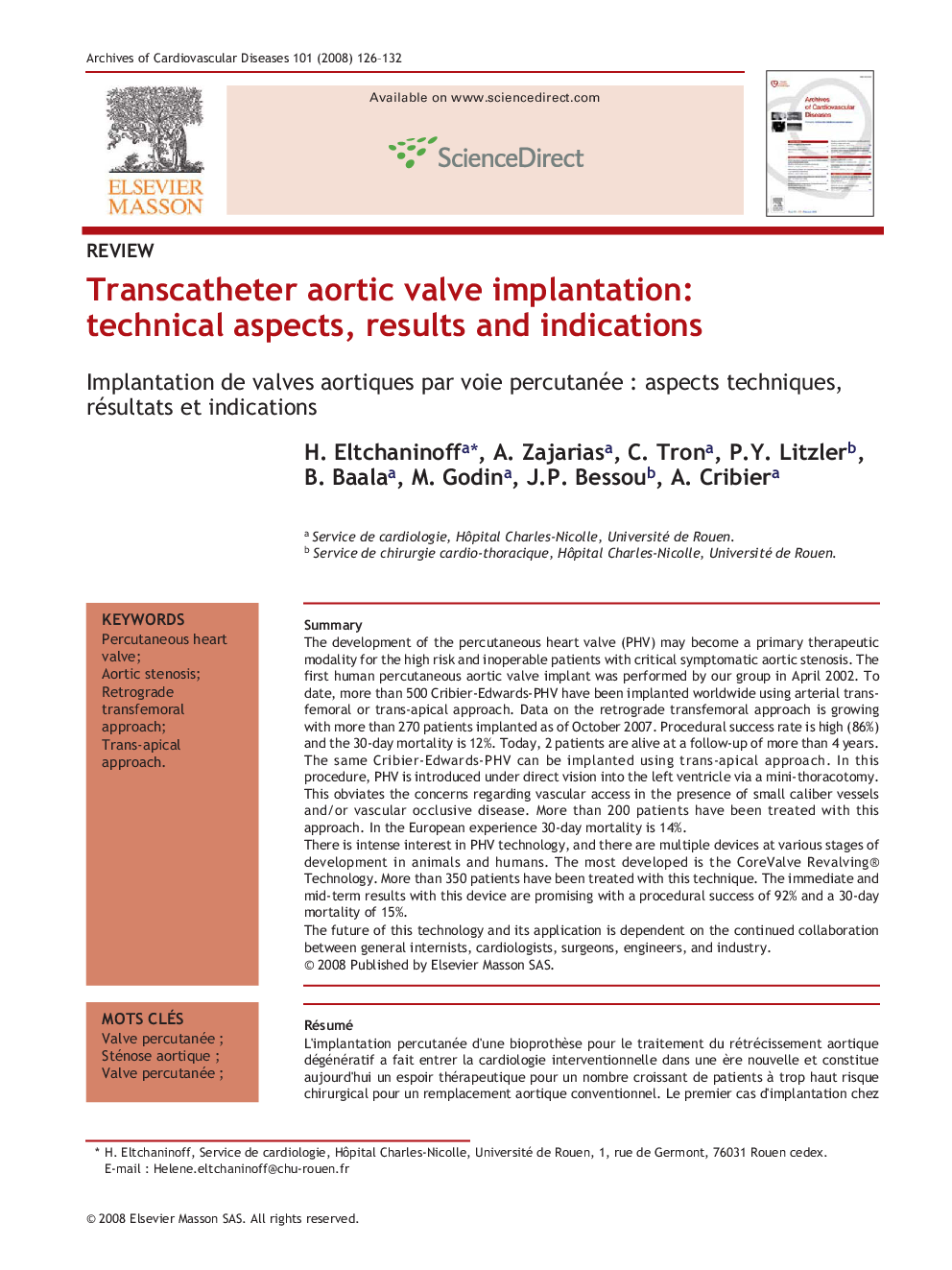| کد مقاله | کد نشریه | سال انتشار | مقاله انگلیسی | نسخه تمام متن |
|---|---|---|---|---|
| 2890051 | 1574418 | 2008 | 7 صفحه PDF | دانلود رایگان |

SummaryThe development of the percutaneous heart valve (PHV) may become a primary therapeutic modality for the high risk and inoperable patients with critical symptomatic aortic stenosis. The first human percutaneous aortic valve implant was performed by our group in April 2002. To date, more than 500 Cribier-Edwards-PHV have been implanted worldwide using arterial trans-femoral or trans-apical approach. Data on the retrograde transfemoral approach is growing with more than 270 patients implanted as of October 2007. Procedural success rate is high (86%) and the 30-day mortality is 12%. Today, 2 patients are alive at a follow-up of more than 4 years. The same Cribier-Edwards-PHV can be implanted using trans-apical approach. In this procedure, PHV is introduced under direct vision into the left ventricle via a mini-thoracotomy. This obviates the concerns regarding vascular access in the presence of small caliber vessels and/or vascular occlusive disease. More than 200 patients have been treated with this approach. In the European experience 30-day mortality is 14%.There is intense interest in PHV technology, and there are multiple devices at various stages of development in animals and humans. The most developed is the CoreValve Revalving® Technology. More than 350 patients have been treated with this technique. The immediate and mid-term results with this device are promising with a procedural success of 92% and a 30-day mortality of 15%.The future of this technology and its application is dependent on the continued collaboration between general internists, cardiologists, surgeons, engineers, and industry.
RésuméL’implantation percutanée d’une bioprothèse pour le traitement du rétrécissement aortique dégénératif a fait entrer la cardiologie interventionnelle dans une ère nouvelle et constitue aujourd’hui un espoir thérapeutique pour un nombre croissant de patients à trop haut risque chirurgical pour un remplacement aortique conventionnel. Le premier cas d’implantation chez l’homme a été réalisé en avril 2002 par notre équipe. Depuis, plus de 500 patients ont été traités à travers le monde avec la valve de Cribier. Les implantations par voie artérielle fémorale se multiplient avec plus de 270 patients traités. Le taux de succès est de l’ordre de 90 % et la mortalité à 30 jours est de 12 % dans les études multicentriques récentes. Deux patients ont dépassé les 4 ans de suivi. La même valve peut être implantée par voie-transapicale, après mini-thoracotomie sous anesthésie générale. Les résultats portent sur plus de 200 patients avec un taux de mortalité à 30 jours de 14 % dans la série européenne.L’intérêt pour cette technique est croissant et de nombreux modèles sont en développement. Plus de 350 patients ont été traités par implantation d’une CoreValve. Les résultats sont également très prometteurs avec un taux de succès de 92 % et une mortalité à 30 jours de 15 %.L’avenir de ces technologies et leur application future dépendra de la collaboration étroite entre médecins traitants, cardiologues, chirurgiens, ingénieurs et industrie.
Journal: Archives of Cardiovascular Diseases - Volume 101, Issue 2, January 2008, Pages 126–132